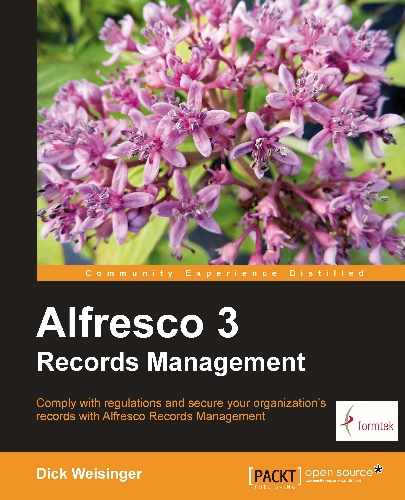We've looked in detail at how to create the disposition schedule that defines the lifecycle instructions for a record. This chapter will show how those instructions are carried out and managed during an actual record lifecycle.
In this chapter, we will discuss:
- How an undeclared record is first filed and then declared
- What the steps are in transferring a record to another location
- How accession is a special type of transfer and how it differs from a standard transfer
- The difference between destruction and deletion of records
- How to freeze documents requested for legal purposes
In the last part of the chapter, we will again go into some developer specifics on how the Alfresco Records Management system is built in a section called "How does it work?". The information is useful to developers (or those who are just curious) for understanding how the Share Records Management system can potentially be modified or extended to meet the requirements of your organization.
We discuss in detail how to configure some background processes that are responsible for sending out notification e-mails and also for automatically triggering time-based events that are defined in File Plan disposition schedules.
We will look at how File Plan Holds and Transfers are implemented, and we also will see how transfer reports are automatically generated and filed.
When a document is first filed into the File Plan, it is placed into a Folder of the plan and is assigned a unique record identifier and marked as an undeclared record.
When filing a document into the File Plan, it is also assigned a number of aspects that are specific to managing records, such as the rma:record aspect. These aspects bring along with them many records-specific properties.
However, since undeclared records, by definition, have not yet been declared, the disposition schedule of the Category that the record is filed under doesn't yet affect it. You might think that it's possible to upload a new version of file content for an undeclared record, much like you can for a standard document, but that isn't allowed.
Undeclared records can also potentially be blockers. In the case of a disposition schedule that is applied at the Folder level, if an undeclared record exists in a Folder with that disposition, the Folder's disposition steps will be blocked. For example, even though a folder may be due for cutoff, it can't occur until only declared records are filed in the Folder.
